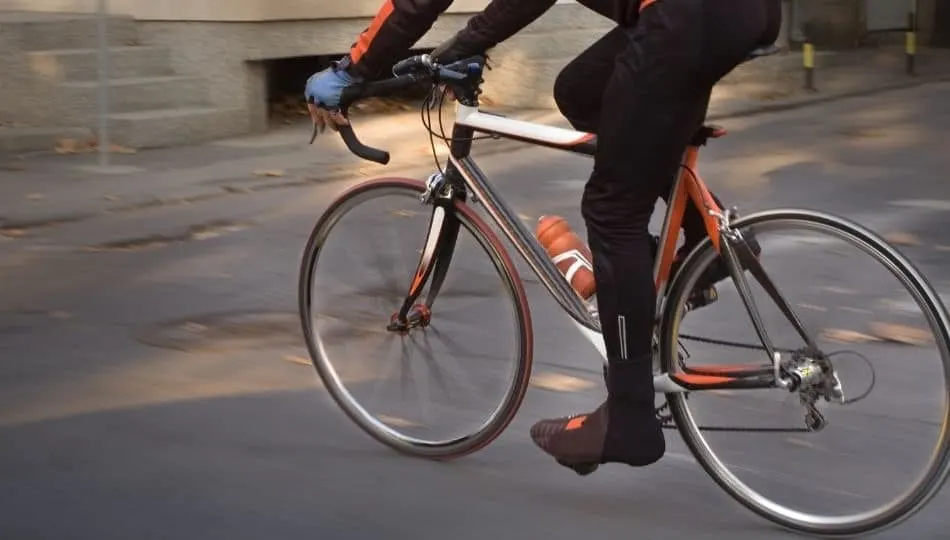
It’s great to find some like-minded cyclists. The experience is exciting, but it also comes with a set of demands. Even though group cycling rides can be enjoyable, they are also not easy to organize. There is a certain amount of teamwork, discipline, and cooperation required when cycling as a group.
Both drivers and bikers want to get to their destinations safely and without incident. So learning the etiquette of cycling in traffic is a great way to make sure you stay safe and enjoy the cycle ride. Here’s a guide to cycling etiquette with detailed information. Keep reading.
Why is it necessary to ride a bicycle with etiquette?
In many cases, bicyclists are involved in bicycle accidents that result in injury or death, and many of these accidents are related to their actions. In addition to not wearing a helmet, you may also choose to ride into a street without stopping, turn left or steer into traffic coming from behind, run a stop sign, or drive the wrong way in traffic.
Few tips on cycling etiquette
Following Best Practice for Cycling Etiquette in a city includes:
- Wearing and/carrying basic safety equipment for your cycle ride
- Interacting appropriately with other road users using hand signals
- Using the cycle lane unless unavoidable
- Abiding by local traffic laws
- Parking your bicycle reasonably
The following guide will give you detailed information on how you, as a cyclist can be safe on the road, have fun riding, and follow appropriate etiquette, so that other road users know what’s going on.
Basic Equipment for Safe Cycling in the City
You want to be safe on the road while you are cycling about the city. Of course, the keys to safety are visibility and self-protection.
Making sure people can see you on the road will ensure they do their best to avoid an accident with you and take care when driving close to you. Protection gear is great to prevent damage in the event of the unexpected.
When building up your safety cycling gear or about to hit the road on an adventure, consider the following items to bring with you:
- Cycling Helmet
- A Bike Repair Kit
- Bright Colored Clothing or Reflective Gear
- Reflective Tape on The Bike
- Bike or Head Lights
- Personal Identification
- Your Cell Phone
Interacting with City Traffic
When it comes to incidents involving cars vs. bicycles, unfortunately, cars win out in the end. Not only do they have strong exteriors, but they keep the person driving them safe from the incident. On a bike, you are left exposed to the elements and any accident that may befall you. Being aware of your fellow travelers can help you prevent accidents from occurring.
On top of that, you need to follow certain cycling etiquette to ensure they too respect your boundaries and can work with you. Communication and awareness are two critical factors that can prevent your fellow road travelers from making mistakes. Follow our easy etiquette tips when you hit the road!
Be Wary When Turning
Turning while on the road can be a tricky proposition. As a cyclist, turning left can have you pedaling as fast as you can to make it through the intersection before the light changes. Turning right can pose similar problems, especially if a vehicle doesn’t see you and turns right into your lane.
As a cyclist, make sure you know your surroundings and ways you can make your trip as easy as possible for you. When close to a right-hand turn lane, be aware of the vehicles ahead of you and keep an eye out for any initiated right turn signals.
While not everyone is kind enough to signal, when you see a right hand turn upcoming, try and hang back to avoid being in a blind spot.
For left-hand turns, weigh your options. You can either go with the flow or choose to hop off your bike and take the crosswalk available. Remember that there are rules to the road and, even though you a cyclist, your bike is still considered a vehicle, so you must go with the traffic. Either option available to you will help you get to your destination without incident.
Act as Though You Too Are a Vehicle
No matter if you are on a cycling adventure or a driver, there are rules to the road. Stop signs, stop lights, and warnings all exist to keep us safe and allow traffic to move easily without problems. Even though you are on a bike, following the rules of the road will allow you greater safety. The law applies to everyone, motorists and cyclists alike.
While there are some common laws everyone knows about driving, it may be beneficial to take the time to read up on them again and cycling law. Some cyclist laws do vary from driving laws, which can help you get a better understanding of your place on the road. Compare these and know them for best practice.
The best way to ease a driver’s anxiety and get them to give you some space is by being as predictable as possible. There is no better way to do this than to follow signs and lights. This way, they can see you and know where you are and what you are going to do, allowing them to flow in traffic with you!
Stick to the Bike Lane, Unless Unavoidable
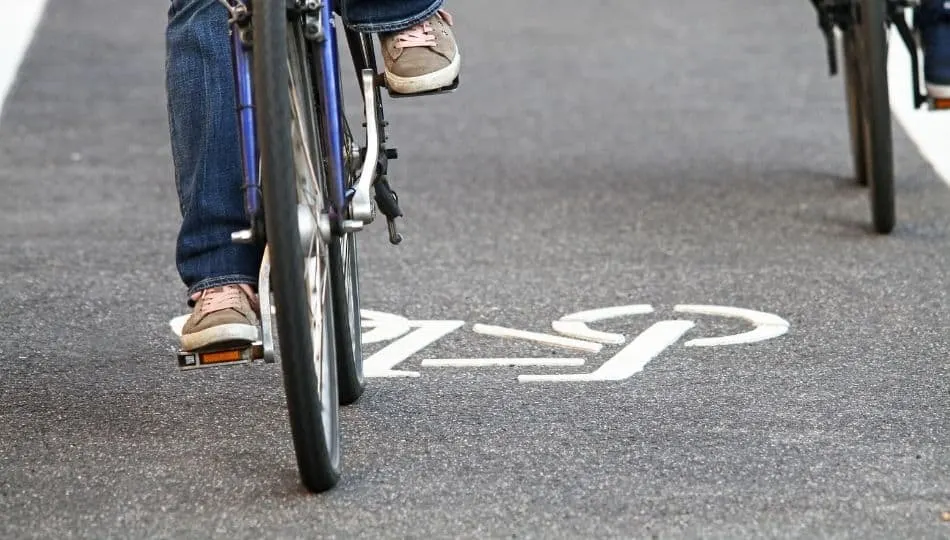
Bike lanes are there for a reason: to give you space on the road so you can travel without concern of traffic. If your city has bike lanes, they want you to use them and be safe! Of course, you still need to be aware of those turning right or if some of the bike lanes come into contact with a parking area.
If there are no bike lanes or the lane is coming to an end, merging into traffic lanes will be unavoidable. While this is not ideal, remember you have a right to be in the lane and take up space. If you are a single rider, this is especially not ideal, but it is necessary. Just remember to signal and be predictable: the drivers will get over it.
Ride with The Flow
This one is common sense: Ride with the flow of traffic. Do not go against traffic. It is illegal to do so! Many places have laws in place against this sort of activity as it is dangerous for not just the cyclist but for those on the road. How dangerous? According to Triathlete.com, cycling in the opposite direction of traffic is 3.6 times more likely to result in an incident.
Keep in mind that as a cyclist, you are considered to be manipulating a vehicle and therefore are subject to the rules of the road. Riding with traffic will increase your visibility to drivers, who pay attention to traffic going their way. This makes for a safer environment for all those who are on the road.
Assume You Are Unseen
Vehicles are big, bulky, and hard to miss. As a cyclist, unfortunately, no matter how brightly colored you may be, you are smaller and easier to miss. What can you do if that is the case? While it may sound negative, always assume you are not being seen by drivers. Be aware of your surroundings and try to react to them ahead of time.
While that may be discouraging, do take all the necessary steps to make sure you are as visible as possible. Wearing bright clothes can help you stand out from the crowd of cars, and reflective tape can help motorists better see your bike at night time. If possible, consider lights for your bicycle as well for not only visibility for you but for motorists.
Predictability is another great way to avoid incidents in these cases. If the person driving ahead of you cant see you, but the person behind you can, acting as a normal road vehicle will allow them to offer additional protection and be a second set of eyes for you. Follow the traffic patterns and keep yourself as visible as possible!
Interacting with Other Cyclists
Whether you already have a cycling tribe or you have just met some people who share your passion, cycling with others can be a fantastic journey! However, once you hit the road, cycling bad habits can put a damper on relationships within your group. Is there a sort of cycling etiquette among other bike riders?
In a word, there are some things you can do to be more amiable and conversational with your cycling buddies or those you meet on the road. This will help them be able to travel with you, move around you, and have a great time cycling. Just as with drivers, these communicative and predictability moves ensure everyone stays safe.
Follow Your Path
Whether in a bike lane or on the road, there is a natural path your bike follows. Many envision this as a line leading from under their bike along their desired route down the road. Following this line allows for your bike path to be predictable and allows other cyclists to move with or around you.
Suddenly veering in a direction or deviating from the imagined line can cause a number of reactions. Other cyclists paying attention may assume somethings in the way and veer similarly unsafely. Those that are not paying attention might run smack into you or have to make a panic decision to avoid a collision.
Avoid these by following your path and making gradual changes to your route. If you must turn, do so as easily and respectfully as possible. This way, other cyclists can acknowledge you and move around you or follow you as necessary. Remember, it is all about predictability in order to avoid problems.
Note – A Beginners Guide To City Cycling
Do the Hand Jive
While it may feel silly sometimes, hand signs and signals can be a great way to communicate with other cyclists and sometimes drivers. If your cycle does not have illuminated indicators, this can also be necessary. Telling them how you are turning or where you are going to stop increases predictability and is what cycling safely is all about!
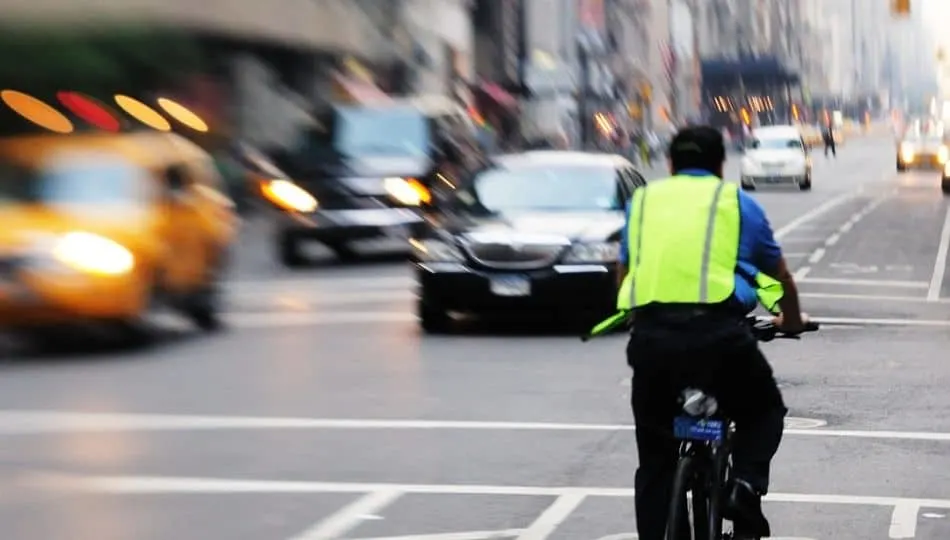
Do you know your hand signals? If not, do not worry. Here are some of the most common hand signals you can use on your bike ride:
- Left-hand flat, left arm extended, or left-hand point: “Hey, I’m turning left.”
- Right-hand flat, right arm extended, or right-hand point: “Hey, I’m turning right.”
- Flapping your right arm down: “I’m going to slow down!”
- Arm extended, bent at the elbow, hand a fist: “Hey, I’m going to stop,” or “Hey, we’re being told to stop.”
- Pointing down directly at something: “Hey, there is a hazard here. Careful!”
- Sweeping your arm overhead: “Go ahead and pass me!”
- Similar sweeping gesture at crosswalk: “After you, go ahead.”
- Thumbs up: “Thanks,” or similar positive reinforcement.
While it may feel a bit silly, this can help you indicate and communicate more easily with those around you. Being fair, not all people may see your signage or recognize it if they are unaware of hand signs, so remember to be patient. Regrettably, we cannot always stop and talk it out in the middle of the road.
Be Careful Passing
We all cycle for different reasons. While you might be out for a bit of adventure and leisure, another cyclist may be getting their exercise on. When you see them behind you, it might turn a relaxing day into a competition or may annoy you when they go for the pass. Before you do that, stop and take a breath.
Passing can be dangerous enough when executed amiably. With cars on the road, remember you may be the only other person that is looking out for your fellow cyclist. Competition or trying to overtake someone out of spite can put you both in a precarious place. Instead, try and make the passing as easy as possible.
If you are passing, make yourself aware of oncoming traffic and try to pass quickly to avoid possible issues. Be aware of their path to predict where they are going and avoid a collision. Once the pass is complete, signal with a thumbs up for no ill will. If you are being passed, keep to your path, making as much space for the other, and signal they are good to go!
Park Your Cycle in A Reasonable Way
This can actually be handy for helping fellow cyclists and motorists. When you’re done with your ride for now or making a quick pit stop, be sure that you can lock your bike away from the street. Following parking courtesy will ensure your bicycle does not get damaged and does not impede traffic. The last thing you want is for your ride home to slip underneath someone’s tires or to knock another cyclist over.
Look for an area away from the curbside where you can lock it securely. Of course, bicycle theft is also a major concern, so as an additional tip: use a U-lock to secure your bike. Chains, combo locks, and standard locks can be busted off easily and allow thieves to make off with your bike. U-locks are hard to remove without the lock release!
Do Not Tailgate
Just like in a car, you can tailgate other cyclists. Not only is it rude and dangerous, it can be frowned upon by fellow cyclists. When talking about motorists, this is called drafting. Drafting is the practice of trying to increase your gas mileage by tailgating a semi-truck. Their larger vehicle creates a pocket of low pressure, allowing you to have less resistance on your car!
The thought of this practice is that it reduces drag. However, the reality is that it puts the semi-truck and the motorist in danger. If the semi has to stop suddenly, there is no guarantee that the motorist can stop too. The big truck also cannot see the motorist, so any moves or adjustments can potentially result in damage to the smaller car.
Just like drafting, if you tailgate your fellow cyclists, it is poor cycling etiquette. First, you rely on the drafting principle to conserve your strength as they work hard to get where they are going. It is beyond disrespectful. Second, if they have to stop, turn, or adjust, now both of you are in a precarious situation.
Give your fellow cyclists adequate space to enjoy their cycling trip. If you are inadvertently tailgating, give them plenty of notice that you plan to overtake them and then do so safely. As always, give positive feedback that you did not intend to interrupt their ride or cause harm with a thumbs up.
Interacting with the Rest of the City World
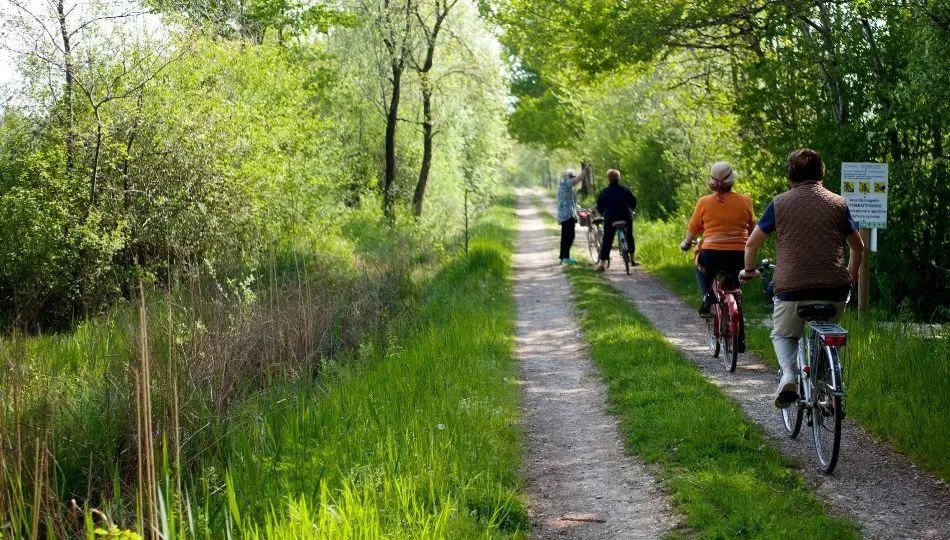
Now that you know how to interact with cyclists and motorists, you might think you are done with the etiquette lesson. However, there are more than just these people you might meet on the road. That’s right: as a cyclist, you also have to interact with the world and its nondriving, noncycling inhabitants! This also includes the law.
Luckily, the etiquette for working with them is fairly common sense and simple. With some quick research and a bit of knowledge, you can remain safe on your journey and be sure there are no altercations or issues. These tips are meant to help you be the safest city cyclist you can be while on your adventure.
The Sidewalk Is Not for You
It is tempting when the road is particularly congested to just hop onto the inviting sidewalk. After all, it is just sitting there, waiting to be ridden upon. What could the harm be? When you do this, you can actually make the pedestrians moving around you feel less safe and increase the chances of an incident.
Pedestrians expect the sidewalk to be clear of fast-moving vehicles that could potentially harm them. This means they are unaware of you as you fly by on the sidewalk. Because they aren’t looking for you, they could end up in your path, leading to you and them being injured. Pedestrians are historically unpredictable, which means you cannot really avoid the incident at that point.
What if you decide to jump off into traffic after a close call? The bad news there is drivers expect cyclists and cars to be on the road; they do not expect them to be jumping into traffic from the sidewalk. As stated previously, it is already difficult enough for drivers to acknowledge cyclists on the road. If you felt invisible before, be prepared to be extra invisible if you do this.
Bike etiquette sidewalk
- Riding on a sidewalk can be the best option for getting from point A to point B while staying out of busy traffic lanes.
- It would be easier to avoid crossing two streets if you rode on the sidewalk instead.
- Be careful when pedaling on sidewalks, yield to pedestrians, and give audible signals when passing them. Think that drivers don’t see you.
It is highly recommended that you hop off your bike and walk it along. While this interrupts your cycling adventure, it is far safer than mowing down walkers.
Pay Attention
Throughout this cycling etiquette article, you may have noticed an overall theme. A lot of it consists of you watching drivers and cyclists as you travel along your route. Paying attention and focusing on your actions can ensure you stay safe and can identify when an issue may arise.
Being aware of your surroundings involves more than just using your eyes, however. The auditory stimulus is just as important as the visual stimulus when you are trying to avoid being caught in an accident. After all, somethings, you can only hear before you see what it is. What can you do to ensure you are giving the road and potential hazards all of your attention?
Put Away the Headphones
It’s no secret that a great playlist can get you in the groove for the activity you are doing. However, that great playlist turned up to 11 can actually hinder your powers of observation. Some signals, such as a truck backing up or an ambulance rushing to an accident, are heard before they are seen.
If you do not hear these auditory signals, you can be taken by surprise by the sudden appearance of an obstacle. In the case of a police car or an ambulance, you could find yourself facing a ticket at minimum for not paying attention! Because of this, reconsider popping the earbuds in before you get on your bicycle. It’s a bit of a downer but can help you stay safe in the long run.
Be Mindful of The Rules
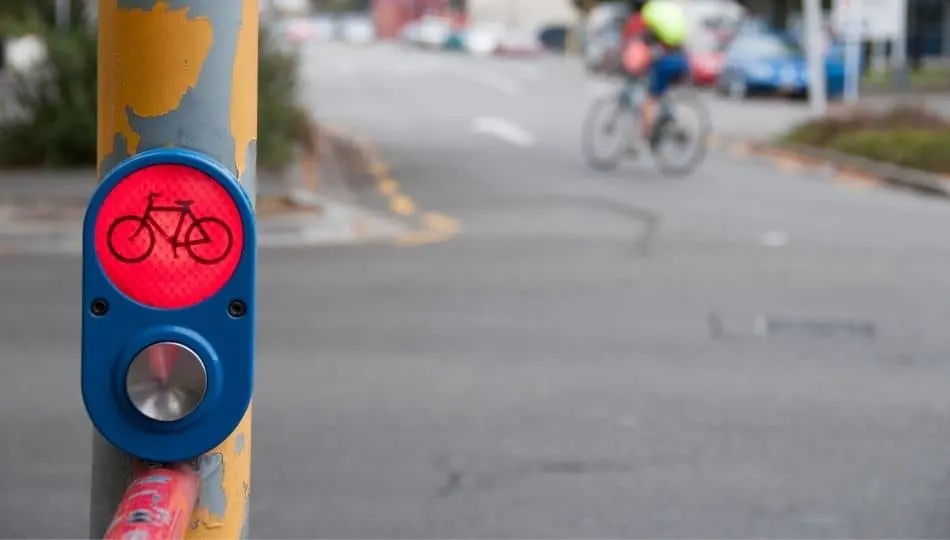
Road safety and cycling safety starts with you. As a cyclist, it’s important you know the rules of the road for both cyclists and cars. This is because even though you are riding a bike, you are still liable to the same rules as a car. This will keep you safe and help you better interact on the road as you travel.
If you are traveling to different locations, brush up on the rules there too. Cycling laws are not universal, so there is some leeway in what regulations apply where. For example, one place may require you only to wear a helmet, while another may state all cyclists need elbow and knee pads, as well as a helmet.
Laws are made for a reason and are designed to keep the people safe, healthy, and happy. If you take the time to read up on the law before you travel on your cycle, you can be sure that you encounter no issues during your adventure. Besides, in the event of an altercation, you can relay the letter of the law to the other individual.
Group Ride etiquette
Rides with groups are on the rise! There are hundreds of Saturday morning club rides involving cyclists around the country. It’s important to remember group ride etiquette if you are new to group rides or want to make newcomers feel at home. Here are few!
- Do not ride more than two side-by-side on a bike.
- You should never allow the front wheel of the rider in front to be more than six inches apart.
- Keep a distance of at least 12 inches between your shoulders and those of the rider on your left.
- A single person can bring things to light. A person in this position should lead the group. The best way to indicate obstructions or turns is with a simple point of the hand. Getting a ride going shouldn’t require two dozen screaming passengers. One is enough to lead the ride smoothly.
To make your group look cool, make sure all members are tight around each other. You should only ride with other cyclists who wear exactly the same kit as you so as to look Euro-cool. The best thing to do if this isn’t possible is to make sure each kit is limited to no more than three different types and that there will be at least three riders wearing each one. Whenever you get in a car at a stop light or if you wish to come through a red light in a large group, please do not pack cars together. There’s just no point in it.
Unwritten Rules of cycling
- Pocket Your Cellphone
It is very important to take your cellphone with you on your cycling ride. In the event of an accident or if you are going to be out longer than expected, it can save your bacon! The bad part about cellphones is they are a major distraction. Cellphones are becoming a big part of why so many drivers and cyclists end up in accidents.
While it is important to have the ability to contact people, put your phone in a safe pocket or turn it off until it is needed or you come to a complete stop on your ride. Yes, it may be important, but the great thing about mobile phones is that any messages you get on your ride will still be there when you stop.
- Identify and avoid hazards
Watch out for hazards like pedestrians, animals, puddles, and bus stops when cycling on the roads, as these could cause you to lose control.
- Make every effort to ride to the right
Keeping to the right side of the road is essential when cycling on the road. Your chances of getting into an accident will be reduced if you cycle this way.
- Don’t let thirst lead to dehydration
A dehydrated body will need more water than it realizes, and dehydration will impair your performance. This can be a problem for racing athletes who are constantly sweating and strive to win as well as finish. Those of us who drink before they are thirsty only increase their urination. As soon as your body needs more liquid, it lets you know, you start to feel thirsty. Now drink the water. All you need is this reminder.
- Put on skin-tight clothes
Racing uniforms are made up of stretchy Lycra and polyester textiles and they are completely optional for the racer. Pedal shorts keep you comfortable while you ride for long periods of time, since they don’t flap about when you are pedaling. When it comes to short rides into or around town, wearing running gear is unnecessary. Having a whippet-like build will also make you look odd. It is fine to wear normal clothes on an everyday trips.
- Do not half-wheel
When half-wheeling, you simply place your front wheel just sufficiently ahead of the pacesetter so they have to increase their pace ever so slightly due to your pressure. It is not uncommon for half-wheeling to quickly transform relaxed group rides into marathon team races if left unchecked.
FAQs about Cycling Etiquettes:
Q1 – What is the most crucial rule in cycling?
Ans – As a cyclist, you should cycle in the same direction as traffic, and you should be aware of cars at all times. To ensure you are safe when riding in traffic, you need to make sure you have the right gear, such as a helmet and bike lights. Keep an eye out for children or pedestrians when you are cycling, especially when there are kids or pedestrians nearby.
Q2 – How do you lead a group ride?
Ans – It is important that ride leaders maintain the advertised pace during the ride. To determine the average speed and pace on your bike, you need a computer. It is a good idea for ride leaders to take attendance before they start the ride so they know how many people are joining them.
Enjoy Your Ride!
The most important thing about cycling etiquette is to make sure you enjoy your ride throughout the city. Cycling can take you on a great adventure to see sights and visit places you may have never been to before. With proper etiquette, you and others on the road can have a great time getting to your destinations safely.
While there seems to be an underlying distaste from motorists for those on bicycles, you can start to weaken this aggression with positive reinforcement and manners. If you show the driver that you are looking out for them just as much as they should look out for you, you can build a rapport and help them see the brighter side of cyclists.
Using this guide, we hope you and your friends have an exciting cycling journey throughout your local city. Remember: predictability, visibility, and communication are the key components to maintaining proper etiquette for your cyclists and will allow you to rest easy. Use these three factors in any place you are cycling to and see the difference!
Our society is governed by many unspoken rules that govern cycling both individually and collectively. By understanding these rules, we can protect ourselves from harm, protect the environment, and make better decisions. We hope you found this cycling etiquette helpful and follow them in future.
